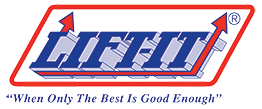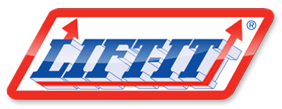old line. There are thinkers, talkers and people who take action.
2014, August
old line. There are thinkers, talkers and people who take action.
I was asked to present a sling and rigging overview training course for helicopter rigging at the 2014 HAI Conference in Anaheim, California. It was an honor to present the program with Robert Libby, Advanced Helicopter Training, Inc. in a preconference educational program. Jeff Gordon, Southern California Edison also presented a brilliant program on the planning that should be involved in all helicopter rigging applications. Both Mr. Gordon and Mr. Libby commented that while helicopter rigging is an extremely important factor in any successful mission, it often is totally overlooked when compared with land based lifting operations. Helicopter lifting slings like any rigging device, when used improperly can result in injury or death. From an exposure perspective improper helicopter sling usage can result in more devastating consequences than land based, sling and rigging operations. Helicopter Long Lines are also used for Human External Cargo applications and there are increasingly more inherent risk factors when the “load” is not an inanimate object. Human External Cargo Lines will be used more frequently by utility companies that perform transmission line work as more cost effective work can be done from the air than from the ground. Helicopter Long Lines manufactured by Lift-It® feature the finest materials and the same heavy duty fabrication skills developed over thirty-five years which are required to manufacture Lifting Slings capable of carrying serious weight. A Helicopter Long Line rated at 1,000 Lbs. receives the same care and attention to detail as Slings rated at 100,000 Lbs. Responsibility for any amount of weight from a manufacturing and load handling perspective should be based upon destruction testing. We are seriously committed in our dedication to excellence and operate 75 ton and 300 ton, in house, test machines calibrated to ASTM E4 standards. All Lift-It® HEC Lines and Helicopter Long Lines are proof tested and certified. Lift-It® Helicopter Long Lines provide the greatest value for your long line purchasing dollar. Lift-It® Long Lines featuring robust Dyneema® SK-75 fiber, YKK® Zippers, Cordura® and Vinyl materials meeting the demanding needs of the helicopter rigging industry. In addition to the vast array of helicopter long lines, we offer a complete line of Helicopter cargo nets and helicopter barrel slings. Helicopter cargo nets must be square in shape and are available in many sizes, fabricated from webbing or rope. Helicopter barrel slings with a bottom support design feature provides for positive barrel engagement. An important safety consideration in the use of a helicopter lifting sling, helicopter cargo net or helicopter barrel sling is a pre-use inspection. There is zero tolerance for defects and even a minor tear in a non-load bearing component, such as a zippered, primary, secondary or weighted long line can have profound and devastating consequences. Some additional safety points to consider: Helicopter Long Line inspections must be thorough, systematic and non-compromising. The inspection process should involve visual and tactile (hand over hand) inspection techniques as some forms of damage are not always visibly apparent. The inspector must always act conservatively as residual rope strength can never be determined by visual or tactile inspection; it can only be determined by destruction testing. Do not use any Helicopter Long Line, helicopter Sling, Helicopter Cargo Net, Hardware or Sling Protection Device that appears to be damaged. If there is any doubt, do not use and remove from service for a manufacturer evaluation. The user is responsible for establishing an Inspection System that employs three levels of inspection: Initial, Frequent and Periodic. The system should also include a person responsible for the development and perpetuation of the inspection program which would include: Training, Procedures, Recordkeeping, Removal from Service Criteria, Scheduling and Maintenance of the Inspection Records. Inspect the entire length of all Helicopter Long Lines for damage including splices. Ensure Eye Splices securely captivate thimbles and that Lockstitch Thread and Whipping Thread is not damaged or broken. Make sure Eye Splices are correct, have not slipped and do not display surface abrasion or cuts. Also inspect the Leg Junction to ensure it does not display cut or jagged strands. Both outer and inner rope fibers contribute to the strength of a Helicopter Long Line. When either is worn, the rope is weakened. Heavy use will cause the rope to be compacted or hard. This is an indication that rope tensile strength has been reduced. UV degradation is indicated by discoloration and the presence of splinters and slivers on the rope surface.
- 2023
- 2020
- 2019
- 2018
- 2017
- 2016
- 2015
- 2014
- 2013
- 2012





